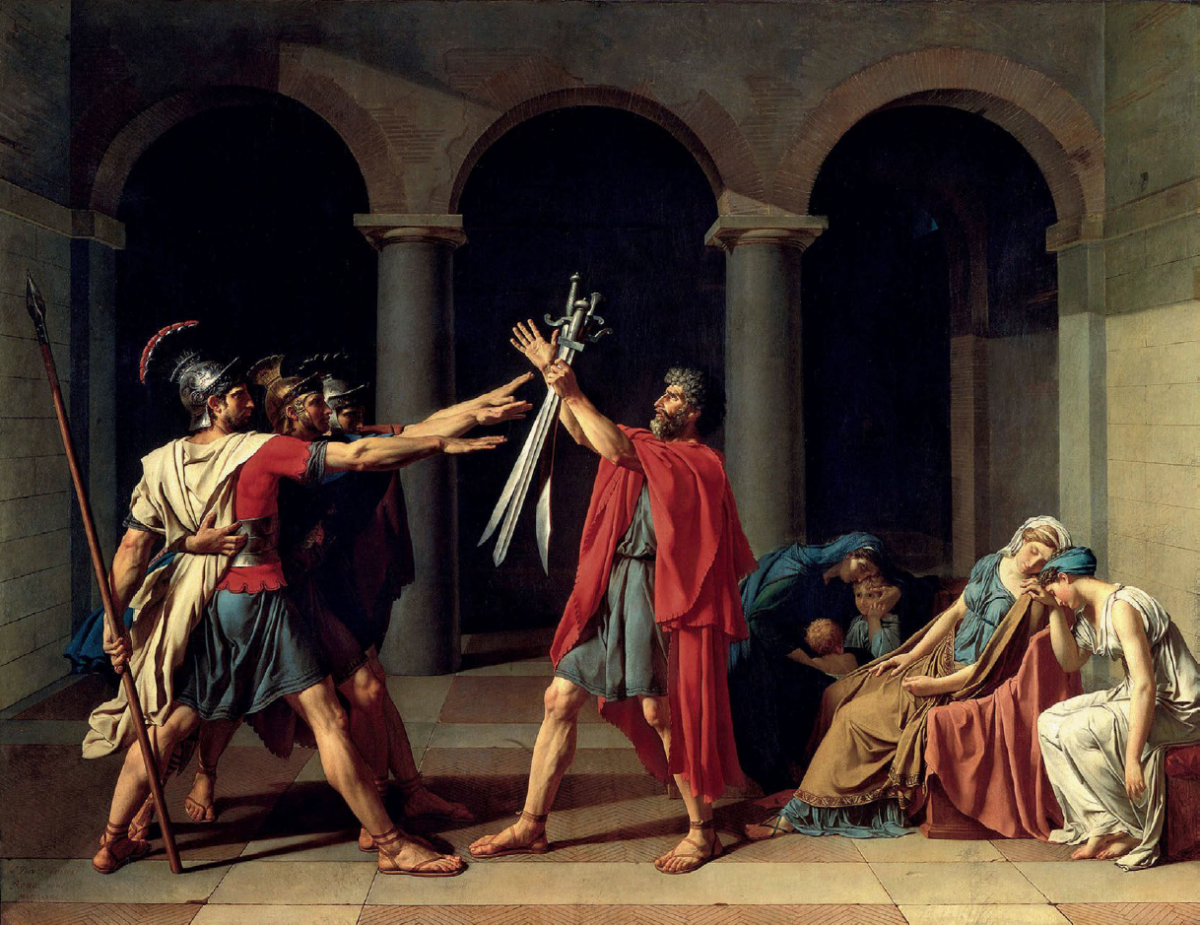
We often think of the internet as a catalyst for transforming knowledge, creativity, and just about everything else produced by human or artificial means. The effects of the internet on art history and on the use of visual images are especially evident. From museum websites, image databases, and new types of images like memes and vines, to online galleries, social media websites, and tools for manipulating images, art is more accessible, more reproducible, and more manipulated than ever before. This has transformed art historical research. Gathering information on images once entailed months of research in libraries and museums. Now, the same research can be accomplished in hours with the aid of the internet.
As an art history major, I have learned that art can encode meanings in complex ways. For example, Jacques-Louis David’s The Oath of the Horatii addressed issues of patriotism and political reform in France in the late 1700s with a story drawn from the early history of Rome. To appreciate the painting, it helps to know the story and to understand how the body was used in classicism, but it also helps to know how the image functioned in the popular political culture of David’s time. Likewise, understanding pop and internet culture is essential to understanding many pieces of contemporary art. Take, for example, “Woman Yelling at a Cat,” a viral meme incorporating a screenshot from The Real Housewives and a confused-looking cat. One of the many alternate versions of the meme incorporates an art historical spin by placing the woman and cat in Leonardo da Vinci’s The Last Supper. To fully understand the images, viewers must rely on all sorts of knowledge gleaned from both art history and popular culture. Such images proliferate today because artists can access images and manipulate them so easily.
Art history illuminates both the continuity and the uniqueness of current times. As long as artists create, art historians will be necessary to provide an understanding of the past and present. Once, art historians had only to know about media that had existed for a long time or that changed only slowly. Digital techniques and the internet have changed this fundamentally, making the work of art historians more challenging and more interesting than ever before.
